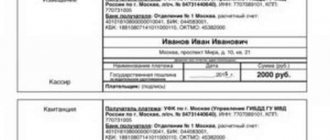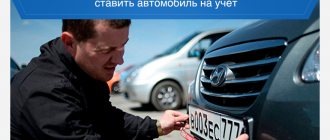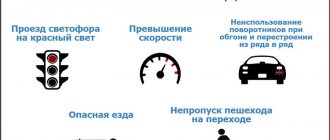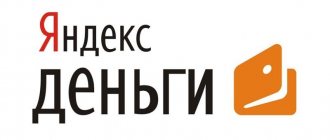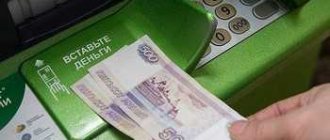Fixation Features
The operating principle of the automatic system is absolutely clear. In places with heavy traffic, video cameras are installed that record violations committed on a certain section of the road. The vehicle that came into the field of view of the device is searched in the database using the license plate number. After this, the owner of the vehicle receives a punishment based on the relevant article of the Code of Administrative Offenses.
Such a system has many advantages. Due to automatic recording, it is possible to bring to justice persons who did not come to the attention of traffic police officers. The presence of cameras has been shown to significantly reduce the incidence of misconduct.
Despite this, many drivers are interested in how to avoid receiving fines from cameras. There is no definite answer to this question, since everything depends on the specific situation. The best option to eliminate the need to pay a penalty is to drive without any violations.
Legal consequences
If the violator is late in paying the fine, he faces administrative liability:
- a fine in the amount of 2 times the unpaid fine (minimum - 1 thousand rubles in addition to the fine for violating traffic rules);
- compulsory work for a period of up to 50 hours.
If the fine was received for a violation recorded by a camera , then the punishment in the form of arrest is not applied. This is how it differs from fines issued by road inspectors: in the latter case, the violator risks facing administrative arrest for 10-15 days.
The case of the outstanding fine will be transferred to the FSSP employees. They have the right:
- forcibly collect the debt from the violator’s bank account (according to a court order);
- block the defaulter's bank cards and accounts.
If the fine is small, then the amount of the fine is forcibly collected from the defaulter’s account, and that’s all.
If the fine comes for a large amount, and the violator does not have the financial ability to pay it at once, then he can ask for a deferment (according to Article 31.5 of the Code of Administrative Offenses of the Russian Federation ). You will need to file an application to the traffic police officer or to the court with a request to defer payment of the fine. The application must be accompanied by documents that confirm the problematic financial situation.
Maximum deferment is 3 months . The specific period is set by authorized persons after studying the current circumstances.
If a person frequently commits offenses without paying the fines that come to him, then the legal consequences may become more serious - for example:
- prohibition on registration of actions with the violator’s car;
- ban on leaving Russia (if the amount of debt is from 10 thousand rubles );
- temporary ban on driving vehicles.
But if the violator officially works as a taxi driver, then it is prohibited to deprive him of the right to drive transport, since this is his only source of income.
In what situations can you evade punishment?
Before you find out whether you can avoid paying fines from cameras, you should find out about the terms of debt repayment. By law, funds must be deposited 60 days in advance. Moreover, in the first 20 days the driver can receive a discount. Within 10 days, the motorist has every right to appeal the decision. If a violation is recorded on camera, you need to file a complaint with the appropriate center.
Unfortunately, there are practically no absolutely legal methods to eliminate the need to bear responsibility. It happens that there is an error in the system, and in such cases the punishment is completely unreasonable and illegal.
Attention! When resolving controversial situations, the driver is required to provide photo or video materials confirming the fact of the unlawful action.
When considering how to avoid paying traffic fines from cameras, you need to consider the following:
- The driver is not required to be punished if the violation itself is not visible on the footage.
- The owner of the vehicle should not transfer funds if there is no information about the fine in the traffic police database.
- You can challenge the collection if the registration plate is difficult to see.
- It is easy to appeal the decision if the fine came to a completely different car (this case is due to errors in the system)
It is important to know! Having figured out how to avoid paying traffic fines legally, you should pay attention to one more aspect. According to the law, the punishment must be borne by the person who was driving. However, by default the automatic system draws up a protocol in the name of the vehicle owner. Therefore, if the owner of the car proves that he was not driving the car, then he should be exempt from paying.
What are the consequences of failure to pay a fine from traffic police cameras?
The Administrative Procedure Code of the Russian Federation states that a fine imposed for violating traffic rules must be paid in full and without fail within 60 days from the date of the decision (Administrative Code of the Russian Federation, Article 32.2, clause 1). If confirmation of payment of a fine by a citizen does not appear in the State Information System within the prescribed period:
- the court issues a second order and sends it electronically to the bailiffs to collect payment in accordance with the law;
- in parallel, a protocol is drawn up on a new administrative offense (evasion from execution of an administrative penalty) in accordance with the Code of Administrative Offenses, Article 20.25, paragraph 1;
- the defaulter is issued a double fine or administrative arrest for up to 15 days / community service for up to 50 hours.
This resolution comes into force after the period for appealing the first resolution imposing an administrative fine for traffic violations has expired, if it has not been appealed by the violator (Administrative Code of the Russian Federation, Article 31.1). To appeal the first decision on an administrative violation, the driver is given 10 days from the moment the violator receives a copy of the document.
Thus, you have a real 70 days to either pay the fine from the traffic police cameras, or appeal/protest the penalties. If you consider yourself innocent. If you ignore the payment request or do not file an appeal within this time, you risk more severe penalties.
In theory, everything is clear and transparent, but in practice everything is much more complicated. Very often, for example, postal failures occur, and violators do not receive copies of the fine on time, which means they cannot pay it on time and do not have time to appeal.
In such a situation, some banks independently write off fines from the accounts of motorists, or do this at the request of bailiffs. Moreover, the write-off can occur regardless of whether you received a notice of a fine or not, and even if you did not receive a second notice of a double fine. It often turns out that the driver, without knowing it, is fined, and money may be debited from his account twice (first the amount of the fine, and then double the amount of the fine).
An even more paradoxical situation arises if you paid the fine, but information about it did not reach the bailiffs. You will pay the second fine automatically, and then it will be very long and difficult to return the wrongfully withheld money.
Evasion methods
One of the common tips on how to avoid paying an administrative fine is to simply not deposit any money. Previously, this option worked and allowed you to get rid of the need to spend your money. However, this method has many nuances that should be considered in more detail.
If the fine is not paid on time, it is entered into the FSSP database. This authority may force payment and subject the driver to additional liability.
Possible measures include:
- Increase in the size of the fine (maximum by 1 thousand rubles);
- Involvement in community service (up to 50 hours);
- Imprisonment for 15 days;
- Confiscation of driving license;
- Limitation of the possibility of traveling abroad.
There are different ways to force the driver to pay the penalty. This is explained by the fact that the bailiff has the right to a number of coercive measures. Among them:
- Seizure of funds or property of the violator;
- Writing off the debt amount from a bank account;
- Temporary travel ban.
Considering all this, the question arises as to how one can avoid paying a fine in this case. If within two years the bailiff has not withdrawn the required amount from the driver, then the debt is lost. However, the expiration of the statute of limitations is a method that works in extremely rare cases.
Other evasion methods:
- Driving with dirty license plates. The registration plate can easily become dirty on the road, for example by dust or stuck snow. Sometimes drivers deliberately apply colorless creams to the sign, which become dirty very quickly. Due to this, the crime recording camera does not recognize the number, and then the likelihood of receiving a fine is much less. As a drastic measure, you can deliberately damage the sign by stripping the paint off it. But such an action is regarded as a violation for which the driver will be fined.
- Driving with a transit number. After purchasing a car, the new owner has 10 days to register and receive his own signs. However, if the driver has an additional purchase and sale form, he can change the date and therefore constantly drive with a transit number. In this case, he will not receive fines from the cameras, and in addition, he will be freed from the need to pay transport tax.
- Foreign numbers. You can travel in the Russian Federation with foreign license plates for up to 6 months. However, then the vehicle must leave the country and return back at least once every six months.
The presented methods cannot be called absolutely legal, since the driver uses tricks to evade paying the fine. Moreover, these methods are not always successful. The risk of financial punishment remains if the vehicle is detained by a traffic police officer.
We move on other numbers
No, this does not mean that you should drive with fake license plates. These numbers include transit and foreign numbers. In the first case, after the previous owner deregistered the vehicle and sold his car, the new owner is issued transit numbers. He doesn’t have to register the car in a hurry.
He can move around the city for 10 days. In this case, you can print copies of the contract and change the transaction date each time. This way, the driver will be able to remain clean before the law. But the risk of getting caught still exists. You may be unlucky and this transit number will appear in the database.
The second case is suitable if you purchased a car abroad. However, you will have to cross the border every six months. This method of deception is very common. Quite a lot of cars around the country drive with foreign license plates. But, if you don’t cross the border on time at least once, you will have to pay a fine.
Recommendations from experts
On thematic forums you can find a lot of legal advice on how not to pay traffic fines from cameras. In the vast majority of cases, drivers are advised to still make the payment and not commit further violations. This will eliminate any problems with law enforcement agencies.
Advice! Lawyers also recommend that if a motorist does not agree with the decision, file a complaint after receiving a notification letter. There are many cases where drivers manage to prove their innocence and legally avoid paying penalties.
Register a vehicle to a legal entity
This is another method from the “no person, no problem” category. If the car is registered at a long-closed enterprise (some old individual entrepreneur), then fines will be sent to some fictitious address.
Several methods that have not proven effective in the fight against chain letters.
Sometimes our ingenuity leads us into completely impassable jungles. Today on the Internet you can read about a great variety of tips for combating outdoor surveillance cameras. Many of them are completely useless, and many have lost their relevance. Video surveillance systems, too, because smart people make and modernize them quite quickly.
- Second number . If you put a second number on the car, the camera will not be able to “read” the required state sign. A lot has been written about this method, but its effectiveness is very doubtful. The camera quickly “reads” the desired number, “ignoring” the second number. But inspectors will definitely stop such a car, since a car with two license plates looks strange, to say the least.
- Infa Pad . A special set (costing 5-7 thousand rubles) consists of special paint and a light bulb. Car owners are encouraged not to hide the number, but rather to touch it up with fresh paint. The trick is that changes in the number will not be noticeable to the human eye or phone camera. You don't have to worry about fines for dirty rooms. But for a camera in IR mode, the number will be impossible to distinguish. In tests, such kits have proven to be ineffective. The room was not only clearly visible, but also illuminated with LEDs. However, the Internet is full of positive reviews about such sets, so it’s possible that a sample that was not of the highest quality was used during testing.
- Anti-radar spray . The cost of the lotion is only a thousand rubles. The principle of operation is the same as that of the Infa Pad. The spray “illuminates” the number in the pictures. In tests, quite expectedly, the spray proved its effectiveness only at night. And even then the number was only slightly blurred, but remained readable. Manufacturers claim that one application should be enough for six months of fine-free driving, which is very doubtful.
- Lens with a special filter . This method actually showed at least some more or less intelligible result. There is, however, one significant drawback to this trick. The lens only highlights your license plate number in photos if the photo was taken from the side. There are such cameras, but most are still mounted on top, and when shooting from this angle, such a lens is simply useless.
- The nets and films that are sold everywhere today also have not performed well. All cameras coped perfectly with the obstacle in the form of such an obstacle. In the surveillance images, the number looked a little darker than it should have, but this did not impair the readability of the registration number.
It is worth remembering that buying such “gadgets” is not entirely legal, and, as it turned out, it is pointless. You still need to remember that all these cameras on the roads that do not always work correctly are not enemies at all. First of all, they are needed to ensure safety on the roads, and only secondly – to replenish the state treasury through fines (in the Moscow region, by the way, most video recording systems are private, not state-owned, so “fine” money is allocated to private individuals and only a small percentage goes to the state ).
As we found out, there are still some effective methods to hide from cameras, and sometimes you can use them. The main thing: be guided by the principle of Ostap Bender and always “honor the criminal code.”
What documents are required to challenge a fine?
Let’s assume that at the time of the traffic violation you were on a business trip or hospital, and another person was using the car. In this case, you will need certificates from work or from a clinic confirming that you could not have been in the car at that very moment in time. You will have to provide information to the traffic police or the court (depending on which authority you contacted) about the person who was driving at the time of the offense. If a person admits guilt, there will be no obstacles to transferring the fine. If you violated the rules, but had serious reasons for it (dangerous driving by other motorists, an obstacle on the road, etc.), you need to provide either witness testimony or a video recorder. If you cannot provide such evidence, then a priori you will be guilty. How to challenge a traffic police fine from a camera if you have not received a notice? “Letters of happiness” are delivered by mail. This is a registered letter, i.e. In theory, it is handed over personally, although in practice postmen send such papers to the mailbox. Your location is taken from the database, i.e. the notification will be sent to your registration address, which may differ from your actual location. Then you need to prove that you were in another place and could not receive the receipt on time: Travel slips. A passport with the registration of the person in whose apartment you live. A rental agreement if you are renting a home.




